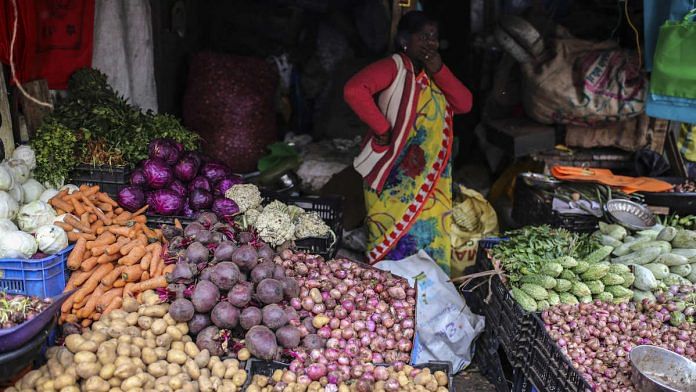New Delhi: For the first time in four decades, consumer spending fell in 2017-18 — by 3.7 per cent.
According to the latest consumption expenditure survey by the National Statistical Office (NSO), the average amount of money spent by a person in a month fell from Rs 1,501 in 2011-12 to Rs 1,446 in 2017-18, the Business Standard reported Friday.
The fall in consumption expenditure, according to data in the survey — ‘Key Indicators: Household Consumer Expenditure in India’ — signifies the increasing number of people affected by poverty. The NSO survey, accessed and reviewed by Business Standard, also highlights a shortage of demand in the market, especially in the rural market.
In villages, says the survey, consumer spending declined by 8.8 per cent in 2017-18, while cities saw it rise by 2 per cent over six years.
According to the annual report of the Ministry of Statistics and Programme Implementation, the survey was supposed to be released in June 2019, but has been withheld due to its ‘adverse’ findings, the Business Standard report said.
The survey was conducted over a period of almost one year, from July 2017 to June 2018 — shortly after demonetization and during the time when the Narendra Modi government implemented Goods and Services Tax (GST).
The monthly per capita consumption expenditure figures in the survey report are in real terms — adjusted for inflation — with 2009-10 as the base year. In 2011-12, this monthly per capita consumption expenditure had risen by 13 per cent over a period of two years.
Dip in food consumption expenditure for first time
According to experts, the most worrying trend of the NSO survey is the fall in food consumption for the first time in decades, pointing towards malnutrition in the country.
The survey found that rural people spent Rs 580 on a monthly basis on food in 2017-18 on average, almost a 10 per cent fall from Rs 643 in 2011-12 (both in real terms). The corresponding figure for urban people was Rs 946 in 2017-18, compared to Rs 943 in 2011-12, which reflects muted growth, according to the Business Standard report.
Quoting former member of the Planning Commission Abhijit Sen, the BS report said, “It’s a real concern from the point of view of welfare of the people. A fall in food spending, especially in villages, shows that malnutrition has increased. It would be fair to say that poverty must have increased significantly.”
The rural India saw a by 7.6 per cent decline in 2017-18 in the spending on non-food items —durable goods, clothing, education, and rent etc — compared to 2011-12. Such spending, however, witnessed an increase of 3.8 per cent in urban areas.
Because of a gap of six years between the two surveys, Sen pointed out, the initial dip in consumption expenditure is difficult to pinpoint.
Many experts and commentators have attributed the falling growth rate and economic
slowdown to a lack of demand. In the June quarter of 2019, India’s growth rate
fell to a six year low of 5% and the State Bank of India has now predicted that India’s GDP growth may slip to a record low of 4.2 per cent in the second quarter.
Also read: No slowdown for these sectors — millennials are spending and pushing growth




Who cares about these numbers until 2024??
The price of just about everything has shot up including basic food items but the income and earning capacity has not, so obviously most people who are on a lower income level are having tough times just trying to meet the increasing costs of living and will necessarily cut their expenditure wherever they can. As an anecdotal example, many are using half an onion per dish instead of the 2-3 onions that they normally would have had the prices been low. Likewise people are making do with quarter kilos instead of one kilo in all food items and buffering up with fillers like dals (also expensive). What can one do in the face of constantly increasing prices but to somehow cut costs wherever one can. People are helpless, the all powerful govt seems unable to do anything effective to bring down the rising costs of living to affordable levels. Our opinions dont matter to the powers that be. If we complain, we are pronounced “anti national” by those who can not tolerate criticism. We have no choice but to lump it and somehow manage our lives as best we can within our limited means.
No more poignant betrayal of the promise of Achhe Din.